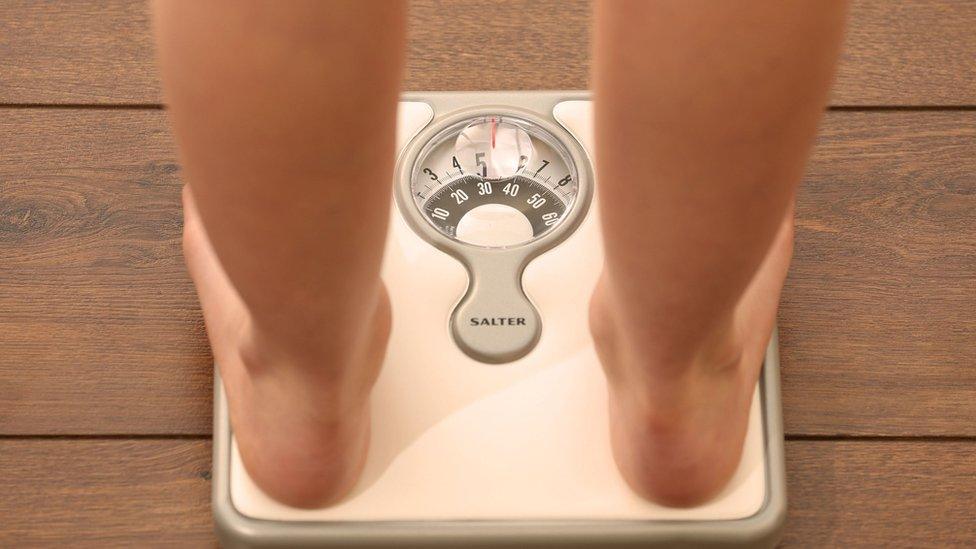Childhood obesity shows slight fall in England
- Published

Child obesity in England has fallen slightly, new NHS data, external shows.
The overall proportion of 10 and 11-year-olds who are overweight and obese remains above the level before the start of the pandemic.
For four and five-year-olds, the news was slightly better with obesity levels now below those from 2018-19.
Children living in the most deprived areas of England are more likely to be obese than those in the most affluent regions.
The National Child Measurement Programme measures the height and weight of children in Reception class (aged four to five) and Year 6 (aged 10 to 11), to assess overweight and obesity levels in children in primary schools.
Obesity rates in Year 6 fell from 23.4% of pupils in 2021-22 to 22.7% in 2022-23 - higher than the 2019-20 pre-pandemic level of 21%.
Meanwhile, the prevalence of obesity in Reception-aged children fell from 10.1% in 2021-22 to 9.2% in 2022-23.
This is lower than in 2018-19 and 2019-20 and shows a continued decline.
Deprivation link
When the numbers are crunched with wealth factors taken into account, the obesity level among the younger Reception children was 12.4% in the most deprived areas, compared with 5.8% of those living in the least deprived.
And for children in Year 6 the difference was even greater - levels were 30.2% in the most deprived, compared with 13.1% in the least deprived.
Dr Mike McKean, vice-president for Policy at the Royal College of Paediatrics and Child Health, said the findings linked to deprivation were "unacceptable".
"Today's data shows that two in five children are leaving primary school overweight and are subsequently at a higher risk of chronic illnesses, mental health issues and even a shorter lifespan. To have these children at such a disadvantage before even starting secondary school is a national disgrace."
A government spokesperson said: "We are committed to halving childhood obesity rates by 2030 and we welcome this data which shows a decrease in the prevalence of primary school children living with obesity.
"By investing £320 million a year in school sports we are promoting healthier lifestyles through physical activity and through schemes like Healthy Start, which encourage a healthy diet for families from lower income households."
Dr McKean went on to highlight the small but "notable" rise in underweight Year 6 pupils.
In 2022-23, the proportion of underweight Year 6 children rose to 1.6% - up from 1.5% in 2021-22, and the highest recorded rate since 2009-10.
"This is a horrifying, yet maybe not all too surprising development," he said.
"After all, food insecurity is a regular occurrence for low-income households in the UK, with one in four households with children affected.
"Food banks are overwhelmed with the level of demand and teachers regularly tell us that they see children coming into school hungry. These two trends are a product of the same issue, poverty."
Boys heavier
Splitting the data by gender, boys are more likely to be overweight than girls.
For boys in Reception, obesity prevalence was 9.3%, compared with 9% of girls.
For boys in Year 6, it was 25.1%, compared with 20.1% of girls.
There were also some interesting geographic differences. The proportion of children in Year 6 living with obesity was highest in the North East (25.8%), the West Midlands (25.2%) and London (24.8%).
It was lowest in the South West and the South East (both 19.4%).
Related topics
- Published3 May 2022

- Published15 June 2022
